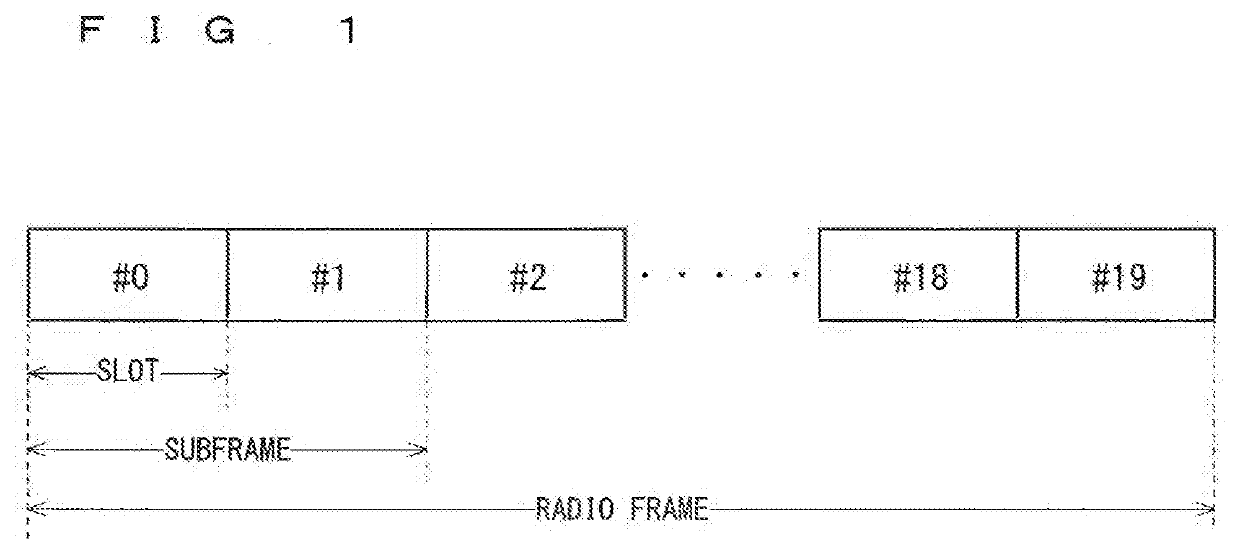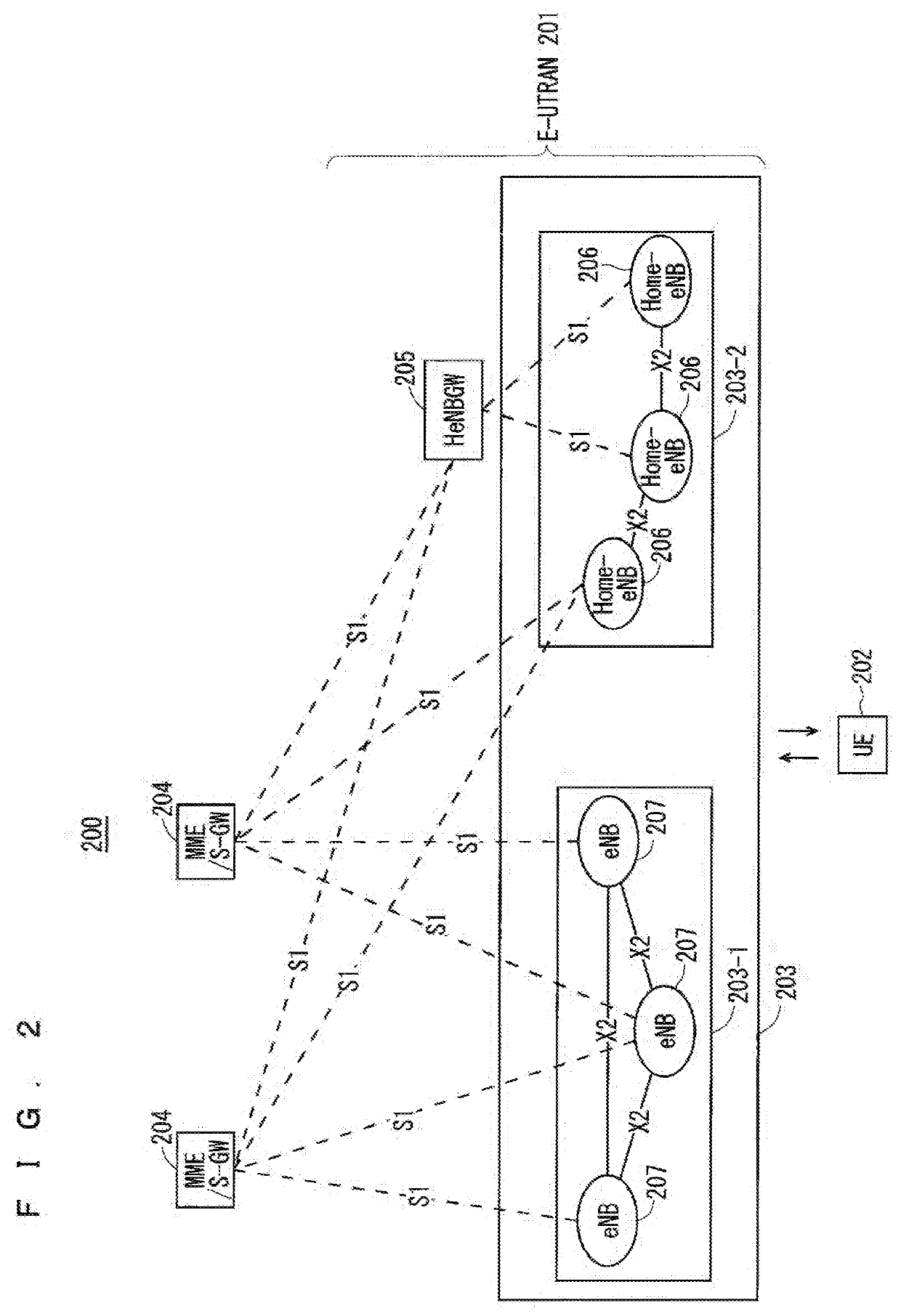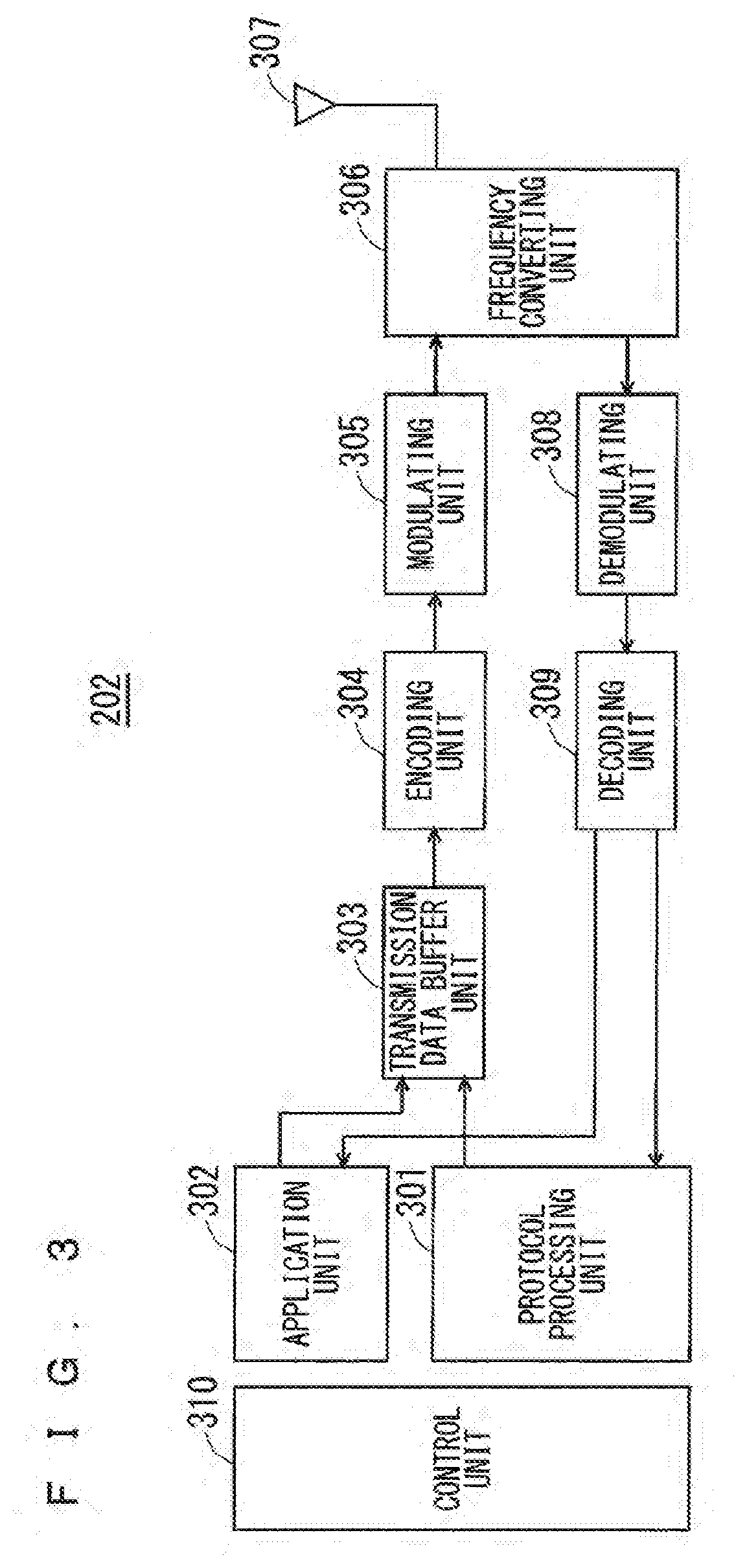Communication system
a communication system and communication terminal technology, applied in the field of communication systems, can solve problems such as collision risks, and achieve the effects of reducing the latency of communication between the base station device and increasing the power consumption of the communication terminal device, and saving the power consumption required for reception
- Summary
- Abstract
- Description
- Claims
- Application Information
AI Technical Summary
Benefits of technology
Problems solved by technology
Method used
Image
Examples
second embodiment
[0276]The physical control channel to which uplink control information (UCI) is to be mapped is the PUCCH in the LTE. The PUCCH resources are set to each UE. For example, the scheduling request (SR) configuration such as the PUCCH resources for SR and the SR period is set to each UE (see 3GPP TS 36.211 V 14.0.0 (hereinafter referred to as “Reference 3”) and 3GPP TS 36.213 V14.0.0 (hereinafter referred to as “Reference 4”). The RRC signaling is used in these settings (see 3GPP TS 36.331 V14.0.0 (hereinafter referred to as “Reference 5”)).
[0277]Multi-beamforming (MBF) requiring the beam sweeping is being studied in the NR. The MBF requiring the beam sweeping requires switching between beams to cover all the coverages. Since one subframe is solely used for transmitting and receiving one beam, the subframe cannot be used for transmitting and receiving the other beams. Thus, the conventional LTE setting method for configuring PUCCH resources for a plurality of UEs in one subframe has a p...
third embodiment
[0583]The second embodiment to the second modification of the second embodiment disclose methods for allocating the PUCCH of each beam to different resources as methods for transmitting and receiving the PUCCH in the MBF requiring the beam sweeping. The third embodiment will disclose another method as the method for transmitting and receiving the PUCCH in the MBF requiring the beam sweeping.
[0584]The cell assigns priorities for receiving the PUCCH to beams. The cell assigns the priorities for receiving the PUCCH to the beams, and receives the PUCCH via the target beam according to the priorities.
[0585]The cell may assign priorities to UEs. The cell may assign priorities to beams via which the UEs communicate, using the priorities of the UEs. For example, the cell assigns priorities to beams in descending order of the priorities among the UEs communicating via the same beam.
[0586]The following (1) to (9) will be disclosed as examples of an indicator for assigning priorities.
[0587](1)...
fourth embodiment
[0643]The second to the third embodiments disclose allocating symbols as the smallest unit of resources to which the PUCCH is allocated. As the number of times the beam sweeping is performed increases, the number of symbols necessary for the PUCCH resources also increases. Thus, configuring the PUCCH resources for many beams within one subframe will cause problems of reduction in the resources for data and decrease in the communication rate. Alternatively, configuring the PUCCH resources for fewer beams within one subframe requires the PUCCH resources over a plurality of subframes, and increases intervals at which the PUCCH resources for each beam are generated. These create a problem of increase in the latency.
[0644]The fourth embodiment will disclose a method for solving such problems.
[0645]A plurality of symbols are configured within one symbol duration, and the PUCCH resources of a plurality of beams are time-division multiplexed. The number of the plurality of symbols to be con...
PUM
 Login to View More
Login to View More Abstract
Description
Claims
Application Information
 Login to View More
Login to View More - R&D
- Intellectual Property
- Life Sciences
- Materials
- Tech Scout
- Unparalleled Data Quality
- Higher Quality Content
- 60% Fewer Hallucinations
Browse by: Latest US Patents, China's latest patents, Technical Efficacy Thesaurus, Application Domain, Technology Topic, Popular Technical Reports.
© 2025 PatSnap. All rights reserved.Legal|Privacy policy|Modern Slavery Act Transparency Statement|Sitemap|About US| Contact US: help@patsnap.com



